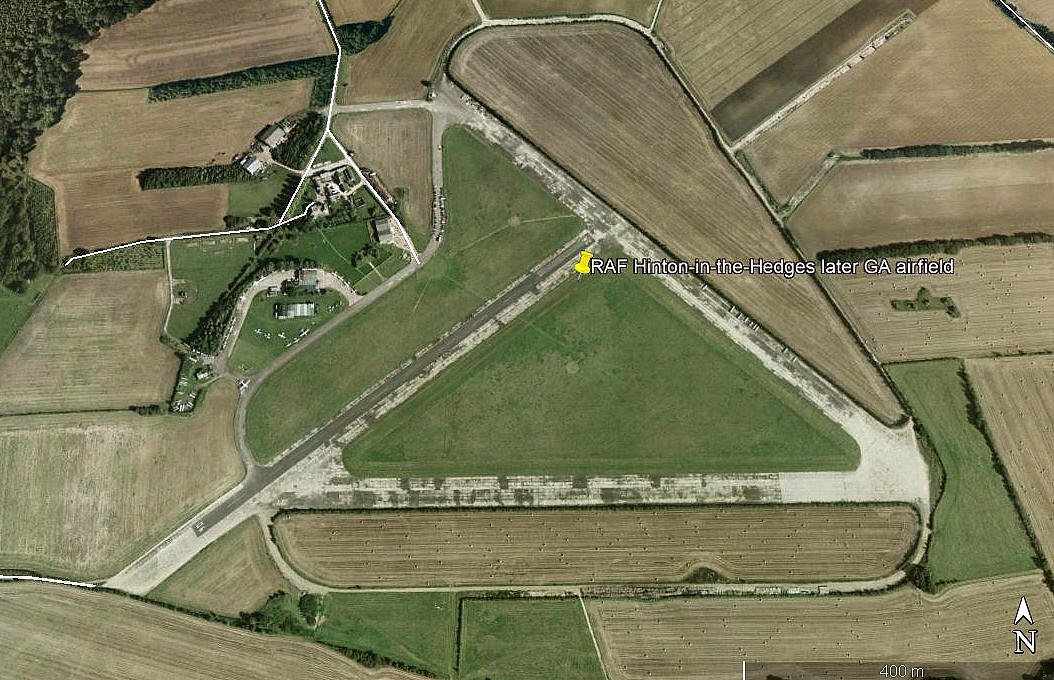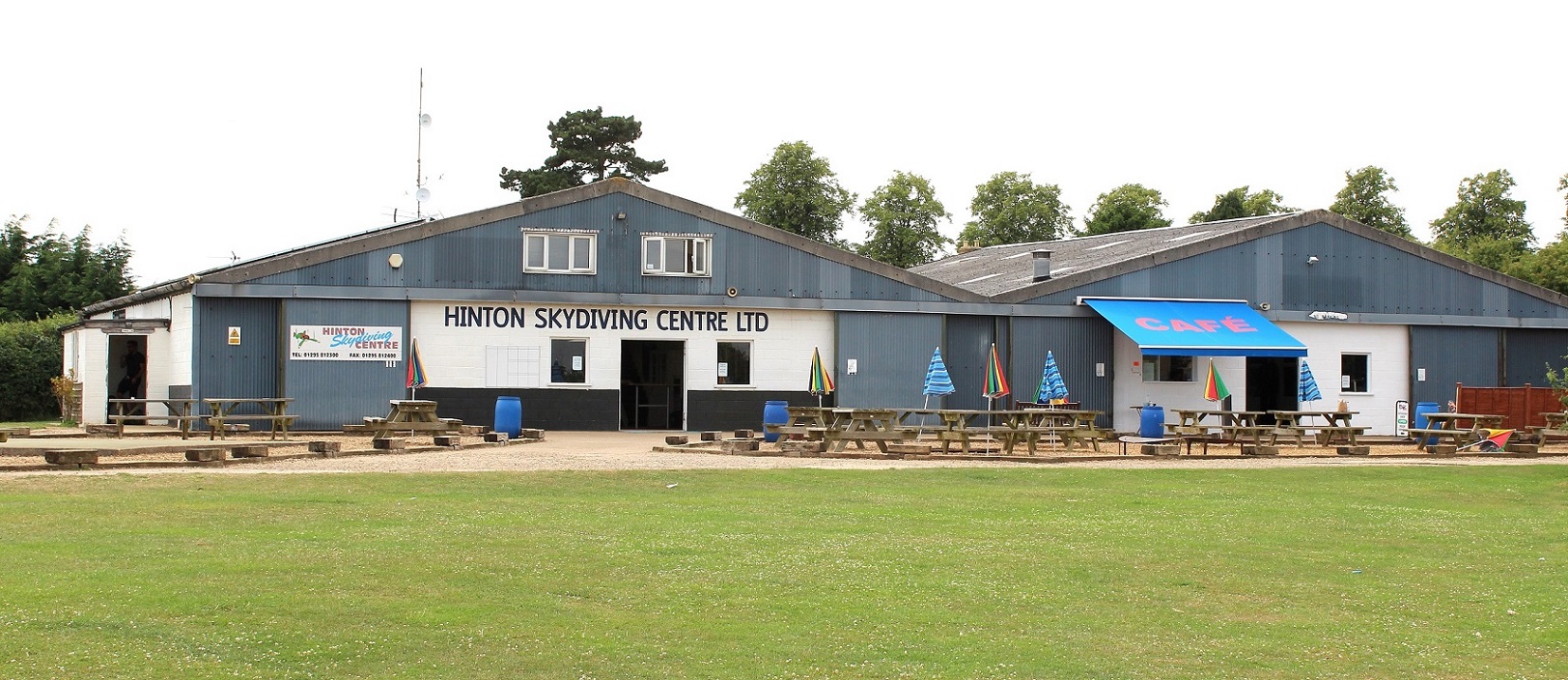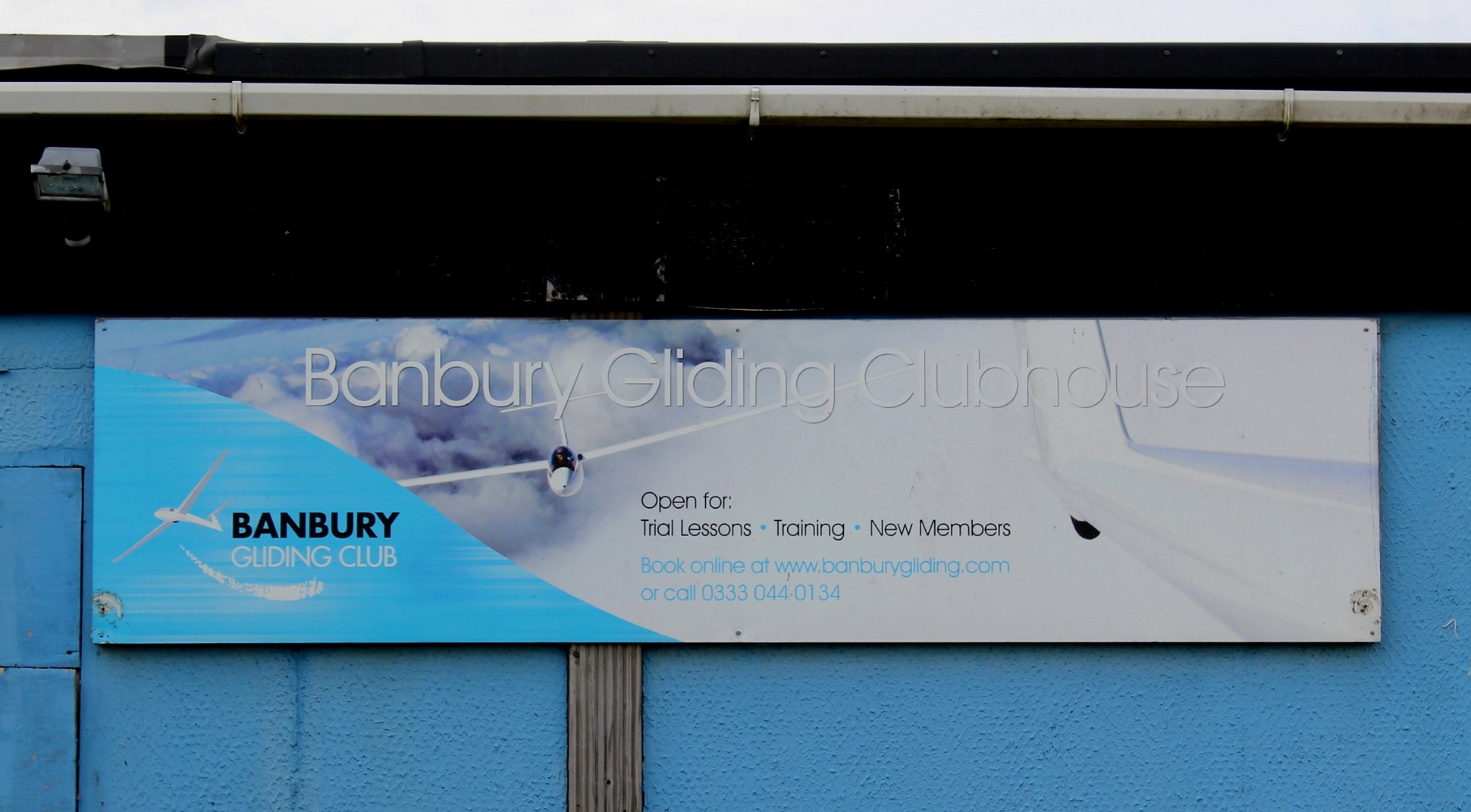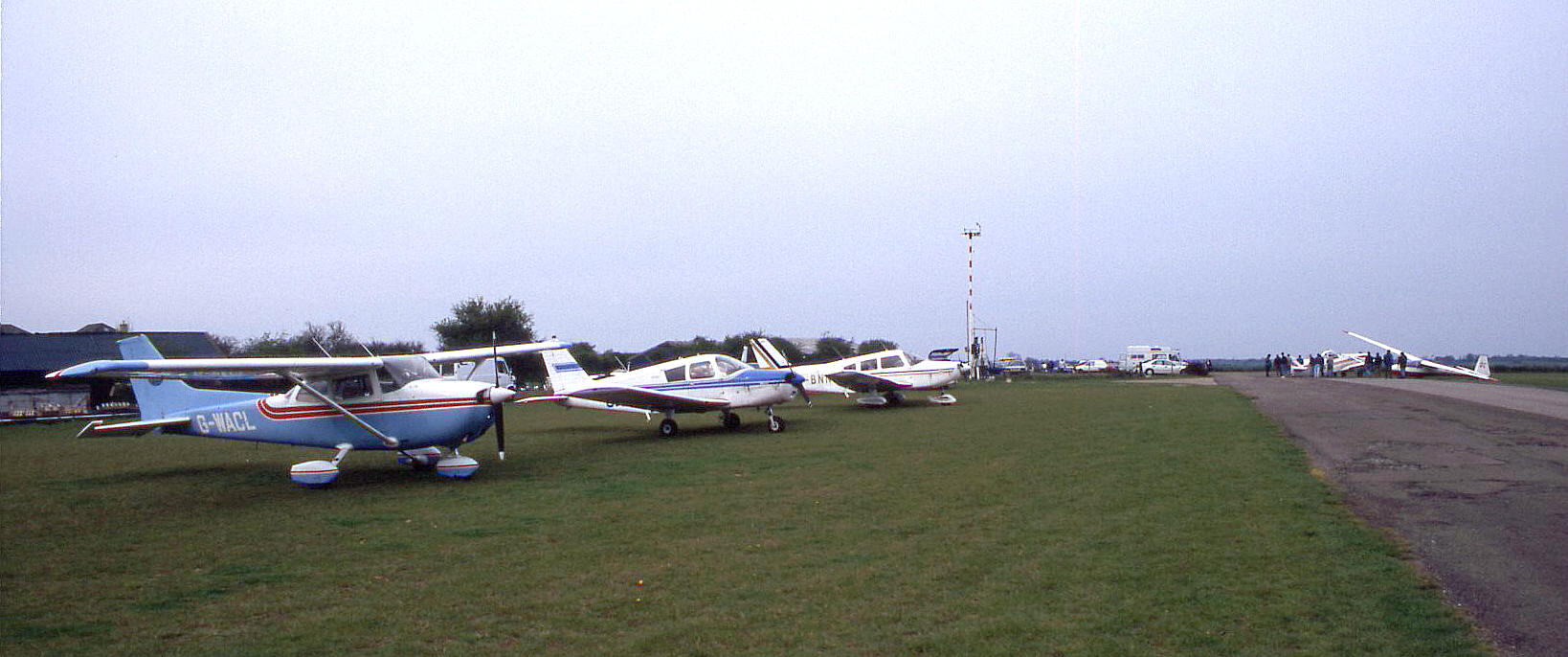Hinton-in-the-Hedges
HINTON-in-the-HEDGES: Military aerodrome later civil private aerodrome (aka BRACKLEY)
Note: All four of these pictures were obtained from Google Earth ©
Military users: RAF Bomber Command 26 Group
78 Sqdn (Armstrong-Whitworth Whitleys)
RVSU Radio Storage Unit
Civil operator: 1980s to 2000: Mr R B Harrison
Civil activities: Post 1945: GA private, training and maintenance, gliding and parachuting
Flying school: Post 1945: Pilot Flight Training
Gliding: 1990: At weekends throughout the year
1981: Aquila Gliding Club
Maintenance: Post 1945: Holdcroft Aviation
Parachuting: 2000: Hinton Skydiving
Location: W of Hinton-in-the-Hedges village, 2nm W of Brackley, 6nm ESE of Banbury
Period of operation: Military 1940 to 1945 Listed as disused in 1985.
Note: Reopened for civil use in the late 1980s it seems and operational to - (See notes below; apparently in use during 1977)
Note: This map is reproduced with the kind permission of Pooleys Flight Equipment Ltd. Copyright Robert Pooley 2014.
Runways: WW2: 06/24 1737x46 hard 10/28 1006x46 hard
14/32 1006x46 hard
1990: 06/24 460x7 hard 09/27 900x45 hard
15/33 900x45 hard
2000: 06/24 700x18 hard 09/27 900x45 hard 15/33 900x45 hard
2001: 06/24 700x18 hard
2007: 06/24 700x18 hard 09/27 grass 15/33 grass
(The latter two runways being used for gliding only?)
NOTES: In 1977 just two aircraft were listed as being based here; Auster 6A G-ASOC and the Cessna F.172L G-AZKW, both operated by Banbury Plant Hire.
A flight guide published in 2000 warns that runways 09/27 and 15/33 are only suitable for landing in strong crosswinds or emergency due to loose grit and stones on surface. Just one year later it seems these options were no longer available.
PICTURE GALLERY IN 2017
NOTES: First picture: Beyond the signs is an odd little building, the purpose of which I can only guess at. However, it does appear to be built on top of a WW2 pillbox. If this is correct, today one can only wonder at the degree of fear a German invasion once had. There is no doubt about the fact that Hitler did order an invasion, (Operation Sea Lion in 1940), and indeed initial steps were taken to implement an invasion force.
However, when Hitler was strongly advised that such an invasion was utterly futile and doomed to fail, the plans were abandoned. And indeed, RAF reconnaissance pictures confirmed this. However, it suited the British government propaganda campaign to keep the myth alive as long as possible - to keep the population quaking in their boots.
Thank heavens that similar misinformation campaigns could not possibly happen in the UK today!!!
Fourth picture: The Pacific Aerospace 750XL ZK-KCE, the second of this type to be operated by the Hinton Skydiving Centre. Just one of two examples in the UK, in 2017 at least, the other (ZK-KAY) being flown by the North West Parachute Centre at CARK in LANCASHIRE. On a visit with a good friend in July 2017 we were very kindly shown around this aircraft, inside and out, and it was very educational.
The design harks back to the Fletcher FU-24 originally conceived for crop-spraying duties in New Zealand, and the 'family' hallmark of stark functionality remains, especially regarding the basic wing design with its 'Jodel' type upward canted outer sections. This aircraft has been stripped of everything in the cabin to enable a maximum payload for parachutists.
This work, taking up parachutists, is very unkind to engines, and a turboprop is by far the best option. So, not unsurprisingly the Pratt & Whitney (Canada) PT6A powers this aircraft, one of the most successful and most produced engines of its kind. Incredibly it now seems to me, the first version was produced in 1960! Today it is generally regarded as being 'bullet-proof'.
Sixth picture. I suspect that the owner and operator of this An-2 is compelled to keep it airborne more out of love, than as a strictly commercial operation. It is configuered with six 'proper' passenger seats and even has a rudimentary toilet installed. So nice to see this happening, and long may the enterprise continue. Having flown an example, I am a huge fan, and what a treat to see several examples of this classic type still flying in the UK.
Eighth picture: The Cessna 150 was designed to be a very robust training aircraft and was a huge success with 23,949 being built between 1958 and 1977. This example, a Cessna 150L, G-MSES was built in 1972, and along with many others are still training pilots today. And indeed, in the hands of a first class highly experienced instructor, very few aircraft are better in the training role. The later version, the 152, was not so successful with 'only' 7,584 built between 1977 to 1985.
A PERSONAL MEMORY
For many years Hinton didn’t have a radio frequency listed and I well remember telephoning for prior permission to land and being assured the details in my flight guide were correct and runway 24 was in use. In fact they’d just obtained a radio frequency.
On finals to land on 24 in light wind conditions I then saw the parachute club Cessna apparently taking off on 06 so went around. Arriving on finals for 06 I then saw the Cessna lined up at the end of 24 and abandoning another take-off run! By now thoroughly confused I went around to reposition for a landing on runway 24 yet again - this time successfuly.
The pilot of the parachute club Cessna was furious as I’d caused him to abandon two take-off attempts and totally blamed me for not being available on frequency! I think he might have asked for an explanation before jumping to conclusions, but some pilots don’t let their ignorance get in the way of making snap judgements. To be fair, he was technically correct of course.
All part of the learning curve I suppose, but what was the lesson to be learnt here? I had consulted the latest pilots Guide and telephoned ahead for advice. What else could I, or should I, have done? Twenty years later I still hadn't found an answer.
We'd love to hear from you, so please scroll down to leave a comment!
Leave a comment ...
Copyright (c) UK Airfield Guide





























